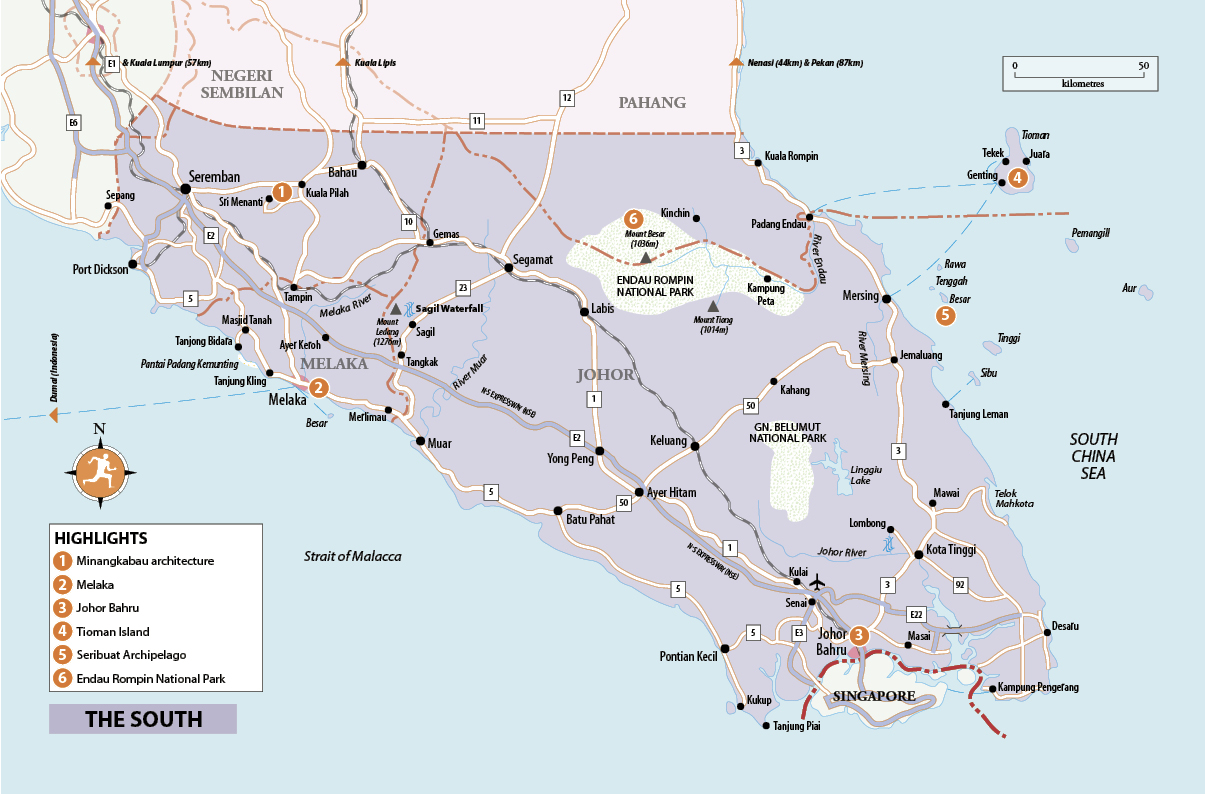The south of the Malay Peninsula, below Kuala Lumpur and Kuantan, holds some of the country’s most historically and culturally significant towns. Foremost among these is the west coast city of Melaka, founded in the fifteenth century and ushering in a Malay “golden age” under the Melaka Sultanate. For all its enduring influence, though, the sultanate was short-lived and its fall to the Portuguese early in the sixteenth century marked the start of centuries of colonial involvement in Malaysia. Today Melaka fascinates visitors with its historical buildings and cultural blend, including the Peranakan community (also called Baba-Nyonya), which grew from the intermarriage of early Chinese immigrant traders and Malay women.
Melaka is not, however, the only place in the region with historical resonance. Between KL and Melaka, what is now the state of Negeri Sembilan is where the intrepid Minangkabau tribes from Sumatra settled, making their mark with architecture that can still be seen in Seremban and Sri Menanti. Both lie just over an hour south of the capital by road. Continuing down the west coast on the train line or the North–South Expressway (NSE), travellers soon reach the tip of the Peninsula and the thriving border city of Johor Bahru (JB) which dates back only to 1855. Beyond it, over the Straits of Johor, lies Singapore.
Visitors tend to avoid the mountainous interior, where the road network is poor, but Route 3 on the east coast is a good deal more varied than the NSE, and winds for 300km through oil-palm country and past pleasant beaches. The biggest attractions along the east coast are Tioman and the other islands of the Seribuat Archipelago; they are havens for divers, snorkellers and anyone else in search of white sandy beaches, clear water and a tranquil atmosphere. Back on the Peninsula, and accessible from either east or west coast, the Endau Rompin National Park is a more rugged and less visited alternative to Taman Negara.


tioman island
Highlights
1 Minangkabau architecture The spectacular and distinctive architecture of this ancient Sumatran tribe survives in Sri Menanti and Seremban.
2 Melaka The UNESCO World Heritage Site of Melaka has Portuguese, Dutch and British colonial buildings as well as unique Peranakan ancestral homes and some of Malaysia’s best food.
3 Johor Bahru It may still be gritty by Malaysian standards, but this border city is smartening itself up with a combination of major public projects and small-scale entrepreneurship.
4 Tioman Island Palm-fringed, scenic and with great diving, this island is understandably popular but retains a laidback feel.
5 Seribuat Archipelago Tioman attracts all the attention, but the other islands of the Seribuat Archipelago offer even better beaches.
6 Endau Rompin National Park A little-visited lush tropical rainforest, rich with rare species of flora and fauna.